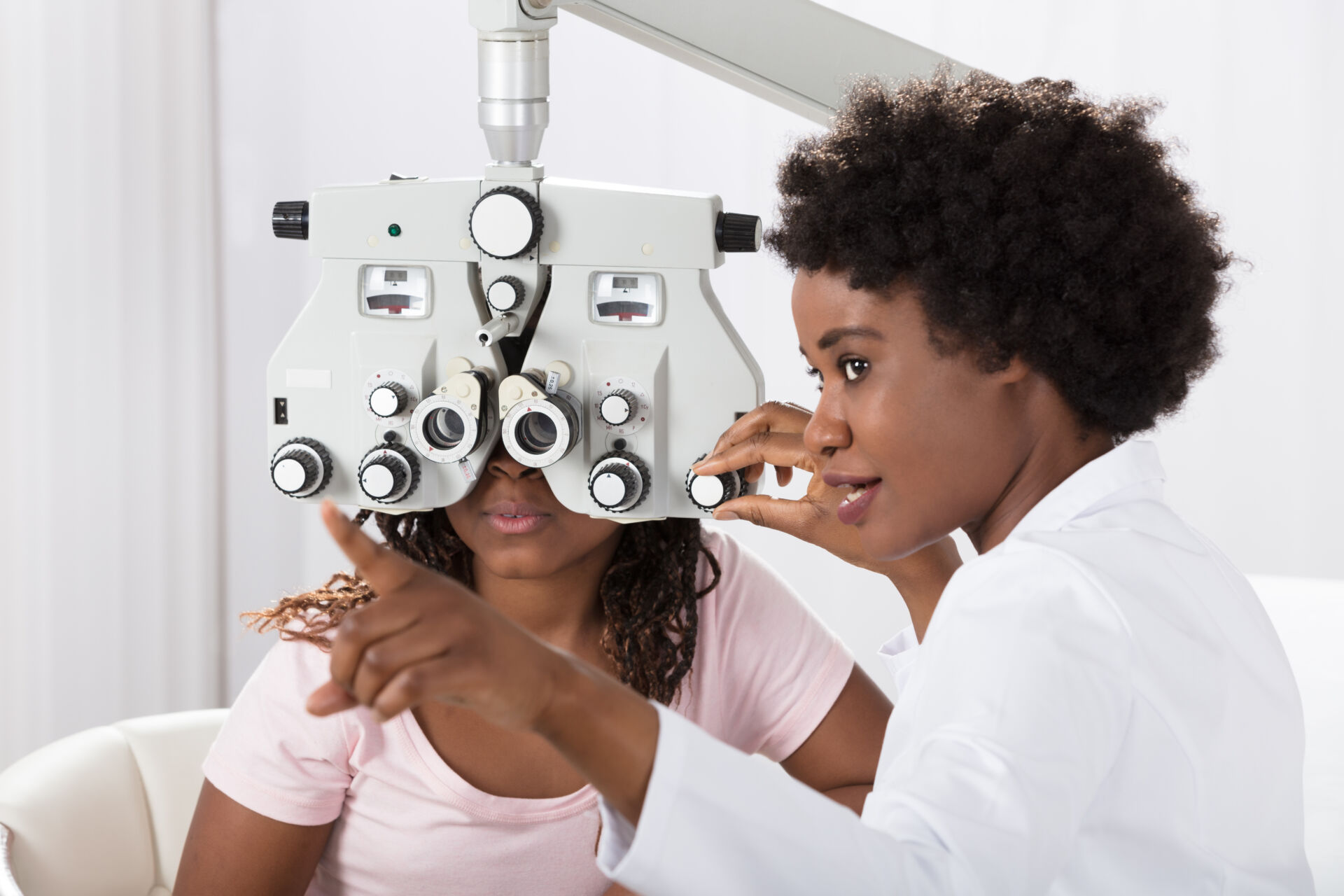Statistically speaking, one out of every ten people you meet is hyperopic. Hyperopia, or as it’s more commonly known, farsightedness, is one of the most common refractive errors to affect human vision.
People with hyperopia can see objects in the distance clearly, but nearby objects tend to be blurry. The condition can be mild enough to be almost unnoticeable, or severe enough to render close-up tasks like reading and computer work impossible.
Fortunately, there are several options for correcting vision impaired by hyperopia. If you suspect that you may be or are becoming farsighted, there are several signs that can help identify the condition and indicate that it’s time to have an eye exam.
What Is Hyperopia?
In your eye, two different structures help focus incoming light into a clear image on the retina. The first is the cornea, the clear dome-shaped structure that sits on the front surface of the eye. Light first passes through the cornea and is refracted, or bent, starting the focusing process.
The light then passes through the lens, which ideally focuses the image on the retina at the back of your eye and transmits the image signal to your brain. Tiny muscles in and around the eye move and flex the cornea and lens to allow you to focus on objects closer or farther away.
In individuals with hyperopia, one or both of two potential problems prevents the eye from focusing on nearby objects:
- The eyeball is slightly flattened front-to-back, causing the focal point of the eye to move to a point behind the eyeball.
- The lens and/or cornea are flatter than they should be, moving the focal point behind the eye.
Hyperopia is genetic and tends to run in families. It is usually present in patients from birth, but the refractive error may be so small in earlier life that it goes unnoticed. The condition typically worsens with age.
Signs That You May Be Farsighted

If your hyperopia has advanced to a higher level of severity, the condition may be apparent, as you may be able to see distant objects much more clearly than you see nearby objects.
For most people, though, hyperopia is more subtle and is only noticeable through a number of tell-tale signs that indicate that there may be a refractive error in the eye. Some symptoms can include:
Eye Strain or Fatigue
After doing close-in work like reading, using a computer, writing, drawing, sewing, or anything else that requires you to focus on a nearby object for a long period of time, do your eyes feel tired or achy? That can indicate that your eyes are trying to focus on the nearby object and continually straining, trying to force the cornea and lens into the right position.
Headaches
We spend far more time focused on nearby objects than on distant objects, and for good evolutionary reasons: the things that are closest to us are the ones most likely to be an immediate threat. Even if your life doesn’t require much close-in work, just the act of maneuvering through life requires good close vision.
When your eye has trouble focusing on nearby objects, the eye is not the only organ that tries to compensate. The brain also works hard to make sense of the blurry objects nearby, which can lead to severe headaches if the farsightedness isn’t corrected.
Inability to Concentrate, Irritability, or Nervousness
If you’re suffering from hyperopia, you’ve likely experienced some of the other symptoms above, and your brain may start associating close-in work with these negative effects. As such, you may begin having trouble concentrating on nearby things as your brain tries to avoid the pain by preventing you from even trying to focus on them.
If you then make yourself focus on nearby objects, you may become irritable or nervous as the effects of your hyperopia begin to set in and the discomfort of eye strain or pain of a headache starts.
What to Do If You Think You May Have Hyperopia
You should be having regular eye exams anyway, but if you’ve missed a few years’ worth and begin to notice any of the above symptoms, you should schedule an exam as soon as possible. Your eye doctor can perform a refraction and determine if you are indeed farsighted and the severity of the error.
If you are having regular eye exams, your eyes thank you. An annual or biannual eye exam can expose the presence of even a very mild hyperopia and your eye doctor can begin prescribing corrective lenses to bring the world nearby back into focus before the condition gets worse.
Most cases of hyperopia are easily corrected with eyeglasses or contact lenses that supplement the eyes’ natural focusing mechanisms and reposition the focal point back onto the retinal plane.
In particularly severe cases, more involved measures may be an option, including lens replacement surgery, something that we’ll discuss in next month’s article.
Regular Eye Exams Are the Best Way to Detect and Correct Hyperopia Before It Becomes Severe. Call Eyesight Associates and Schedule Your Exam Today!
Our eye care specialists have experience identifying and correcting all refractive errors, including farsightedness. Give us a call to learn more: 478-923-5872.
Related Articles:
